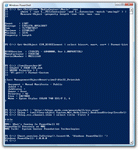What is a computer?
A computer is, at its most basic, a machine which can take instructions, and perform computations based on those instructions.
Computers range from the very small to the very large. Some are capable of doing millions of calculations in a single second, while others may take long periods of time to do even the most simple calculations.
Based on Capacity, speed and reliability computers can be divided into the following categories of computers:
Super computer
Mainframe Computer
Minicomputer
Microcomputer
Types of Computers
Super computer
A supercomputer is a computer which performs at a rate of speed which is far above that of other computers.
The primary use for supercomputers is in scientific computing, which requires high-powered computers to perform complex calculations. Scientific organizations like NASA boast supercomputers the size of rooms for the purpose of performing calculations, rendering complex formulas, and performing other tasks which require a formidable amount of computer power. Some supercomputers have also been designed for very specific functions like cracking codes and playing chess; Deep Blue is a famous chess-playing supercomputer.
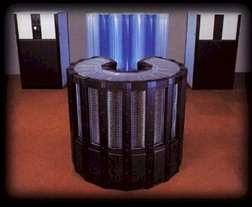 |  |
Mainframe Computer
These are computers used by large organizations like meteorological surveys and statistical institutes for performing bulk mathematical computations. They are core computers which are used for desktop functions of over one hundred people simultaneously. Since mainframes are usually the most important computers in a company’s computational arsenal, they are routinely protected by multiple layers of security and power backup, both internal and external.
mainframe computer
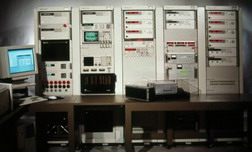
Mini computers
The Mini computers are a less bulky version of the mainframe computers. In times past, the minicomputer was typically a standalone device that was ideal for use by small and mid-sized businesses who needed more power and memory than could be obtained with microcomputers, but did not have a need for the resources provided by mainframes. More recently, a minicomputer is thought of in terms of being a server that is part of a larger network.
The Microcomputer
These are the most frequently used computers better known by the name of “Personal computers”. This is the type of computer meant for public use. Other than Desktop Computer the choice ranges as follows:
- Personal Digital Computer
- Tablet PC
- Towers
- Work Stations
- Laptops
- Hand Held Computer
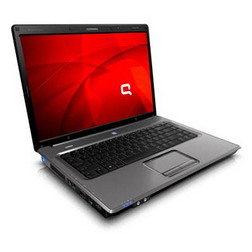 | 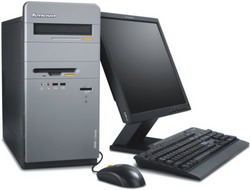 |
Main Components of a Computer
CPU
The CPU or the Central Processing unit is the brain of the computer and the single most important chip in the computer. Modern processors contain millions of transistors which are etched onto tiny square silicon called a die, which is about the width of a standard thumb. The CPU performs the system's calculating and processing.
The speed at which a CPU processes is known as its Clock speed. The speed of the CPU is measured in either Megahertz (MHz) or more commonly now in Gigahertz (GHz). A 1 GHz CPU can carry out 1 billion instructions per second!
Now days, CPU available in the market, have a clock speed of 3 GHz.
Arithmetic logic unit (ALU) is a digital circuit that performs arithmetic and logical operations. The ALU is a fundamental building block of the central processing unit (CPU) of a computer, and even the simplest microprocessors contain one for purposes such as maintaining timers.
 |  |
Main Memory
The main memory holds the program instructions and data. It contains two types of memory chip, called ROM and RAM.
 | 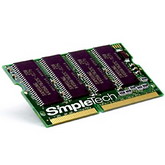 |
Input Devices
Input devices are used to put data and instructions into a computer. Most common input devices are keyboard and mouse. Click here to go to Input Devices topic
 |  |
Output Devices
Output devices are used to get the result of the processing done by the computer. Most common output devices include monitor and printer. Click here to go to Output devices topic.
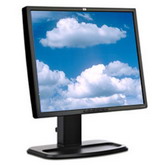 | 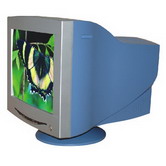 |
Secondary /backing storage devices
Secondary or backing storage is used to store programs and data when they are not being used
.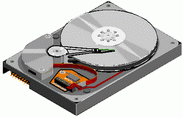
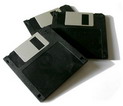
Software is a general term used to describe a collection of computer programs, procedures and documentation that perform some tasks on a computer system.What is Software?
Software includes websites, programs, video games etc. that are coded by programming languages like C, C++, etc.
"Software" is sometimes used in a broader context to mean anything which is not hardware but which is used with hardware, such as film, tapes and records.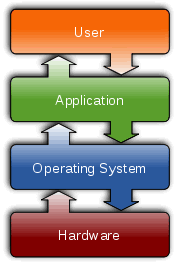
Types of Software
System software helps run the computer hardware and computer system. It includes: Programming software usually provides tools to assist a programmer in writing computer programs, and software using different programming languages in a more convenient way. The tools include: Application software allows end users to accomplish one or more specific (not directly computer development related) tasks. Typical applications include: Typical examples of 'software applications' are word processors, spreadsheets, media players and database applications.System software
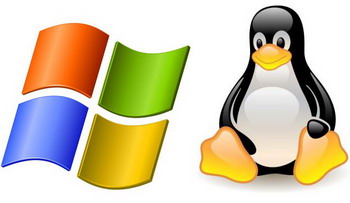
Programming software
Application software

Difference between Hardware and Software
There are several differences between computer hardware and software. However, the fundamental difference between hardware and software is that hardware is a physical device something that you're able to touch and see. For example, the computer monitor you're viewing this text on or the mouse you're using to navigate is considered computer hardware. Software is code and instructions that tell a computer and/or hardware how to operate. This code can be viewed and executed using a computer or other hardware device. However, without any hardware software would not exist. An examples of software is Microsoft Windows, an operating system that allows you to control your computer and other programs that run on it. Another example of software is the Internet browser you're using to view this page. Hardware is the actual components that your computer is made of: ram, rom, motherboard, modem, wireless chip etc. Software is any program that you load onto a computer: the operating system (Windows, Lynix) games or applications. Want to know more about the difference between hardware & software. Click hereTo make it simple...
Operating system
An operating system (commonly abbreviated to either OS or O/S) is an interface between hardware and applications; it is responsible for the management and coordination of activities and the sharing of the limited resources of the computer
. The operating system acts as a host for applications that are run on the machine. As a host, one of the purposes of an operating system is to handle the details of the operation of the hardware.
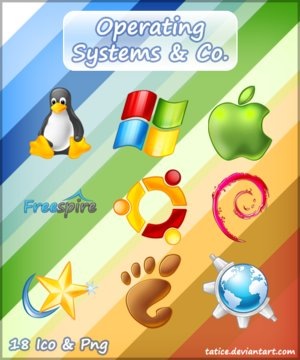
Graphic User Interface
Users may also interact with the operating system with some kind of software user interface (UI) like typing commands by using command line interface (CLI) or using a graphical user interface (GUI, commonly pronounced “gooey”).
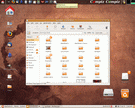
Command line interface
A command-line interface (CLI) is a mechanism for interacting with a computer operating system or software by typing commands to perform specific tasks. This text-only interface contrasts with the use of a mouse pointer with a graphical user interface (GUI) to click on options to select options.
This method of instructing a computer to perform a given task is referred to as "entering" a command: the system waits for the user to conclude the submitting of the text command by pressing the "Enter" key (a descendant of the "carriage return" key of a typewriter keyboard). A command-line interpreter then receives, analyses, and executes the requested command.
